The Eckhart House
Introduction
Text-to-speech Audio
Built in 1891 by George W. Eckhart, the Eckhart House was considered to be representative of Wheeling's progress during America's Gilded Age. The house is a 3-story, red brick Queen Anne building. An October 29, 1891, edition of the Wheeling Intelligencer, listed the house as one of the residential building achievements of the year with tasteful architecture that "has thoroughly impressed everybody who gets about over town much."
Today, the Eckhart House includes a Gift Shop, Tea Room (available for afternoon Teas, children's tea parties and special events) and House Tour.
Images
The Eckhart House, located in "Victorian Old Town"
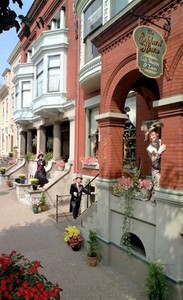
North Main Street in Wheeling looking west at the riverfront property.
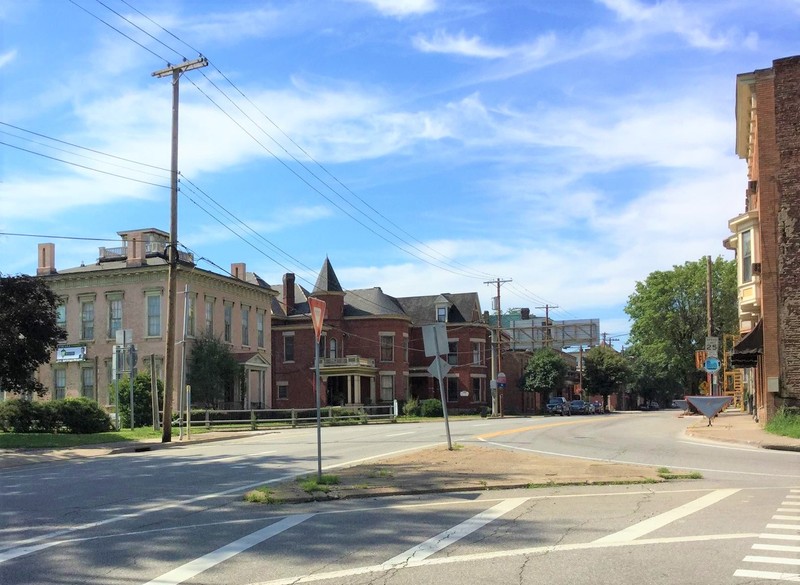
North Main Street looking southeast. The Eckhart House is shaded by the trees.
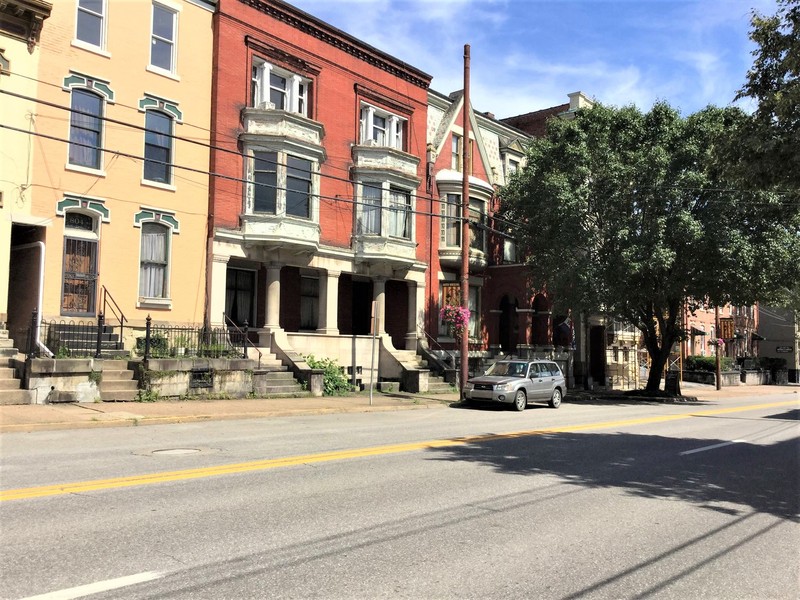
Inside the gift shop.
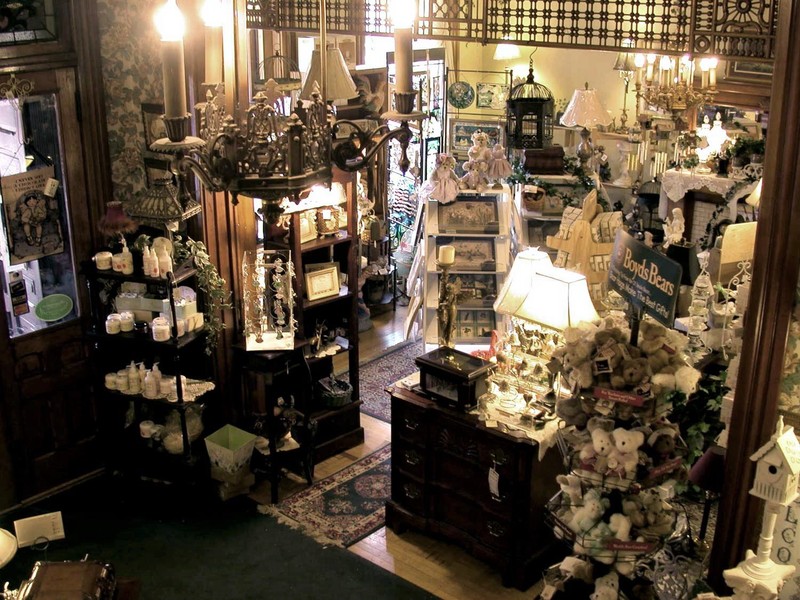
Family parlor
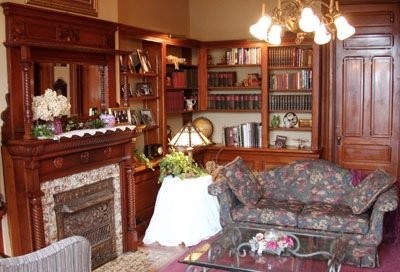
View of the river between the Victorian homes of Old Town.
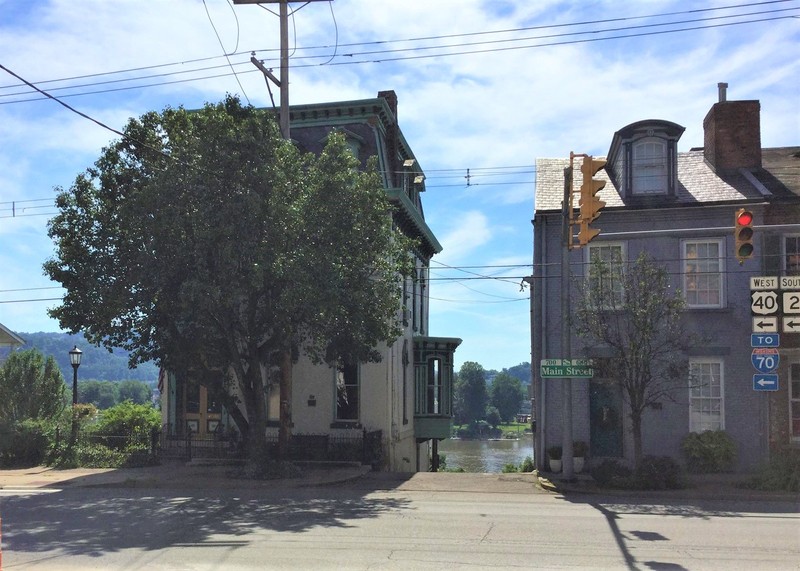
Sketch of the front of the Eckhart House.
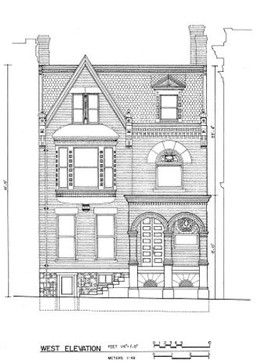
Sketched layout of the interior of the Eckhart House.
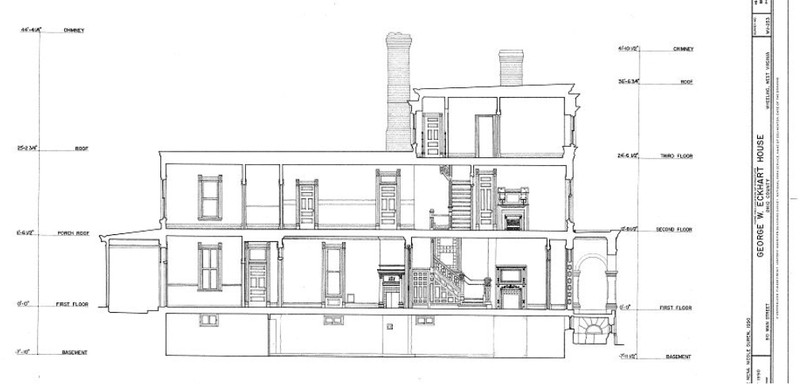
Eckhart House, front view.
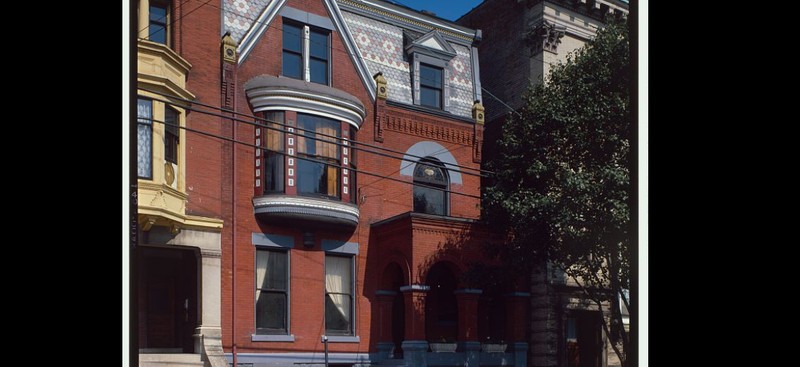
Bannister in entryway.
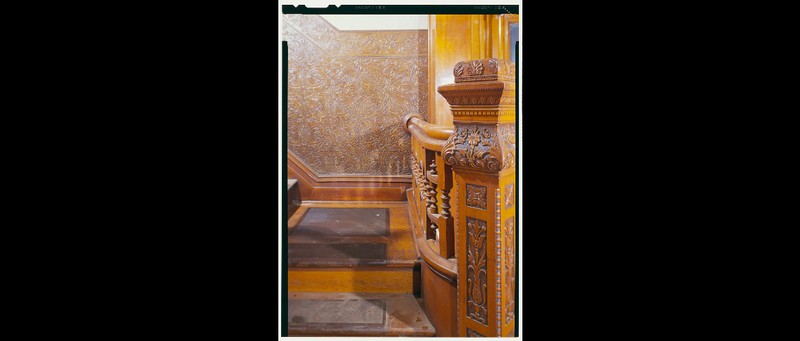
Latticework
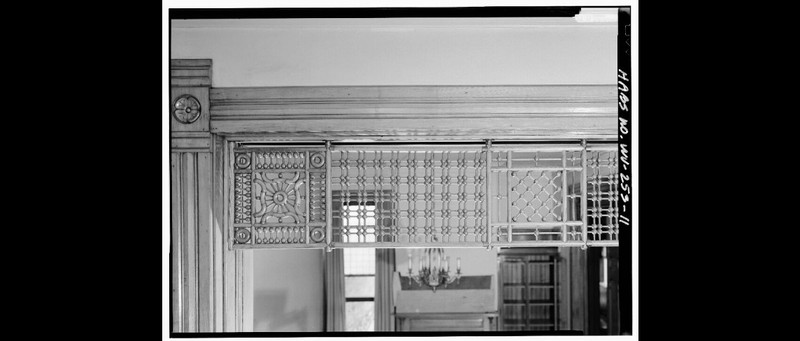
Backstory and Context
Text-to-speech Audio
There was a time when Wheeling, WV had more millionaires per capita than anywhere else in the U.S. "Old Town Wheeling," located on North Main Street between 7th and 9th streets served as home to many of those millionaires. It was one of earliest settled areas of the town. The Zane Family settled in Wheeling in 1769, six years before the first shots of the Revolutionary War, and laid out the first lots in 1793, ten years after playing an important role in the last battle of the American Revolution at Fort Henry, just a couple city blocks south on Main.
Ebenezer Zane built his brick home around 1800 at the corner of Main and 11th Street.The second brick house in Wheeling was built on the corner of Main and 8th Street.With the arrival of the National Road in 1818, Wheeling was made even more accessible for further settlement.
In 1831, Congress designated the town a U.S. Port of entry, then, in 1849, the Suspension Bridge crossed the Ohio River. In 1853, the Baltimore and Ohio railroad brought the first passenger train to Wheeling. By the 1870*s Wheeling was known as the "Nail City," producing more kegs of iron, cut nails than any other city in the United States. It was the launching point for many families headed west and construction supplies were in great demand.
In 1882, it became the fourth city in the United States to have electric lights and five years later, in 1887, Wheeling became the third city in the country to have an electric trolley system. By the early 90's, Wheeling had become an industrial center, known particularly for its specialized steel products, with a population of over 34,500.
It was during this period of economic growth that George Eckhart, a wealthy local banker, decided to build a house in the Old Town section of Wheeling.He originally had his sites set on property fronting the Ohio River which was considered prime. The problem was that Mr. Eckhart was relatively new to wealth and the more established families, one of which was headed by a competitive banker, worked to buy the lots and keep him out. While considered not quite as desirable a location, Eckhart's response was to buy property across the road, on the east side of Main Street, and build a more impressive house, taking special care to include the latest in technology.
Technology in the 1890s was moving at lightening speed. In 1887, Tesla/Westinghouse made alternating current (AC) electricity available and the Eckhart House was the first in Wheeling to be fully wired for modern electricity. While city water was available to all, Eckhart's house included a shower in the bathroom. Most houses included fireplaces that burned wood or coal, but the Eckhart house was built with natural gas fire places, making it cleaner than other houses around it.
The house was listed at $4000 for tax purposes but given an estimate of $6000, which many contractors considered only two-thirds the actual price. In today's money the cost would be 3-5 million dollars. As with many houses at the time, the dimensions included a rather narrow width, but very high and very deep.
The first floor includes a reception hall, parlor, living room, dining room and kitchen. The second floor includes a parlor, four bedrooms and a bathroom. The third floor includes two bedrooms and a bathroom. There is also a raised basement. A garage was added behind the house some years later, built using prisoner labor.
Today, the Eckhart House is owned by the Joseph Figaretti family. Tours are available as well as afternoon teas by appointment. The gift shop is open on Saturdays from 10:00 to 5:00, April through December.
Ebenezer Zane built his brick home around 1800 at the corner of Main and 11th Street.The second brick house in Wheeling was built on the corner of Main and 8th Street.With the arrival of the National Road in 1818, Wheeling was made even more accessible for further settlement.
In 1831, Congress designated the town a U.S. Port of entry, then, in 1849, the Suspension Bridge crossed the Ohio River. In 1853, the Baltimore and Ohio railroad brought the first passenger train to Wheeling. By the 1870*s Wheeling was known as the "Nail City," producing more kegs of iron, cut nails than any other city in the United States. It was the launching point for many families headed west and construction supplies were in great demand.
In 1882, it became the fourth city in the United States to have electric lights and five years later, in 1887, Wheeling became the third city in the country to have an electric trolley system. By the early 90's, Wheeling had become an industrial center, known particularly for its specialized steel products, with a population of over 34,500.
It was during this period of economic growth that George Eckhart, a wealthy local banker, decided to build a house in the Old Town section of Wheeling.He originally had his sites set on property fronting the Ohio River which was considered prime. The problem was that Mr. Eckhart was relatively new to wealth and the more established families, one of which was headed by a competitive banker, worked to buy the lots and keep him out. While considered not quite as desirable a location, Eckhart's response was to buy property across the road, on the east side of Main Street, and build a more impressive house, taking special care to include the latest in technology.
Technology in the 1890s was moving at lightening speed. In 1887, Tesla/Westinghouse made alternating current (AC) electricity available and the Eckhart House was the first in Wheeling to be fully wired for modern electricity. While city water was available to all, Eckhart's house included a shower in the bathroom. Most houses included fireplaces that burned wood or coal, but the Eckhart house was built with natural gas fire places, making it cleaner than other houses around it.
The house was listed at $4000 for tax purposes but given an estimate of $6000, which many contractors considered only two-thirds the actual price. In today's money the cost would be 3-5 million dollars. As with many houses at the time, the dimensions included a rather narrow width, but very high and very deep.
The first floor includes a reception hall, parlor, living room, dining room and kitchen. The second floor includes a parlor, four bedrooms and a bathroom. The third floor includes two bedrooms and a bathroom. There is also a raised basement. A garage was added behind the house some years later, built using prisoner labor.
Today, the Eckhart House is owned by the Joseph Figaretti family. Tours are available as well as afternoon teas by appointment. The gift shop is open on Saturdays from 10:00 to 5:00, April through December.
Cite This Entry
Jones, Susan. "The Eckhart House." Clio: Your Guide to History. July 2, 2018. Accessed April 23, 2025. https://theclio.com/entry/62714
Sources
Historic American Buildings Survey, C. (1933) George W. Eckhart House, 810 Main Street, Wheeling, Ohio County, WV. Ohio County West Virginia Wheeling, 1933. Documentation Compiled After. [Photograph] Retrieved from the Library of Congress, https://www.loc.gov/item/wv0332/.
Interview with Joseph Figaretti by Susan Jones, June 30, 2018.
Interview with Joseph Figaretti by Susan Jones, June 30, 2018.

